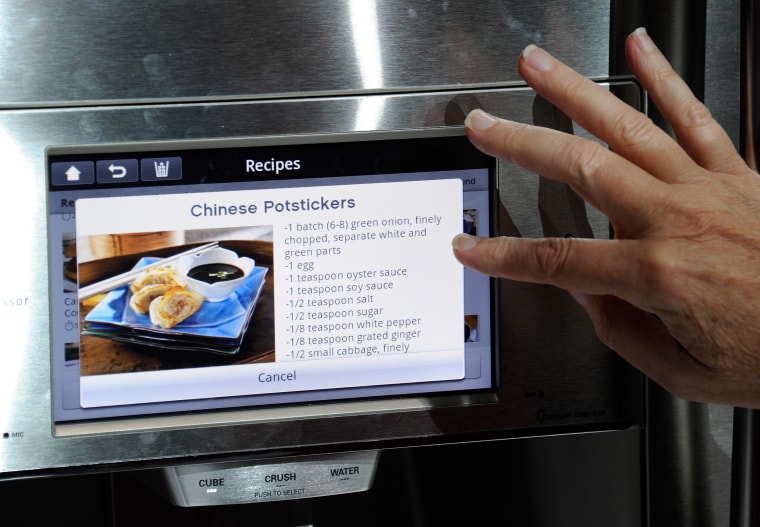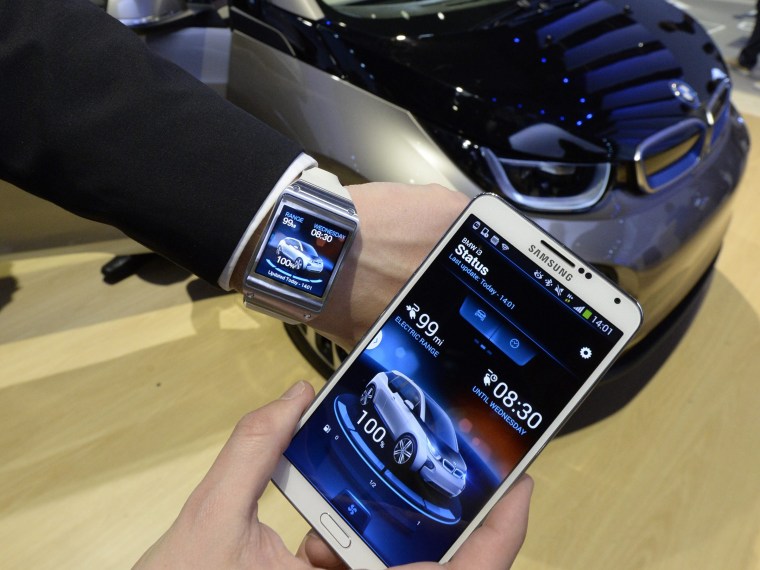Welcome to the "smart life." Brain cells, beware.
It's an entirely wired existence where your Pebble smart watch is connected to your smartphone, which communicates with Google Glass, which can send commands to your Internet-enabled refrigerator and robotic vacuum — all from the comfort of your iOS-equipped car. Sound like a bit much?
Sure, that vision of the future might seem like an amalgam of over-hyped tech trends. But it's probably coming sooner than most people think.
Take "smart homes," connected houses filled with light bulbs, security systems, appliances and TVs that talk to each other and their owner, either through a smartphone or directly through voice and gesture commands. They aren't a "Jetsons" fantasy; in fact, they could be relatively common in five years, said Dr. Sanjay Sarma, director of digital learning at MIT.
And while "wearables" — including wearable gadgets like Google Glass, smart watches, fitness trackers and even sensor-equipped socks — aren't the norm right now, Juniper Research predicts that the size of the market will explode from $1.4 billion in 2013 to $19 billion in 2018.
The car of the future will also probably be connected. Google announced partnerships with Audi, GM, Honda and Hyundai to bring Android information and entertainment systems to dashboards starting this year. Apple announced a similar deal with BMW and Mercedes-Benz in June. By 2020, 60 to 70 percent of cars sold in the United States could be equipped with Android, iOS or some other operating system, said Dr. Egil Juliussen, a principal analyst at research firm IHS.
This is on top of the smartphones that are already out there. Smartphone subscriptions are expected to jump from 1.3 billion last year to 5.9 billion in 2019, according to a study from Ericsson.
It all seems like a techie's dream, but the "smart life" could have unintended consequences.
"The problem is that your brain didn't evolve to process all of that information at the same time," Earl Miller, professor of neuroscience at MIT, told NBC News. "We evolved in an environment where every new sight or noise was important — it could mean a predator was about to leap out of the bushes and eat you."

An email alert on a person’s smart watch isn't life or death. But the human brain can't help but pay attention to it, which could be a problem when five other devices are vying for its attention.
Even when people think they're multitasking, what they are really doing is switching between tasks, not doing them simultaneously. And constant exposure to multiple devices at the same time isn't making people any better at it.
"The more stuff you have, the less you are able to focus on individual things," Miller said. "There is very limited bandwidth for conscious thought."
That assertion has been backed by several studies, including one from Stanford researchers that found that heavy multitaskers were worse at filtering out distractions and focusing on a single task.
Not to condemn the "smart life" as entirely bad thing. Organizing the household, communicating with friends and family, and accessing information — whether it's maps or obscure facts or whether or not there is any beer in the fridge — will be easier than ever before.
"Personally, I'm a technophile," said Edward Vogel, a professor of psychology and neuroscience at the University of Oregon. "There are a lot of positives to this technology. Google Glass and other devices have the potential to augment our world and help us quickly make more informed decisions."
The problem, Vogel said, was that tasks that require more contemplation and sustained focus could become more difficult.
That’s particularly bad news at high speeds.
The dangers of texting and operating a vehicle are obvious. In 2008, texting was the most likely cause of a train accident that killed 25 people in Southern California.
But studies and multiple experts have claimed that even hands-free communication distracts drivers from the road. That is because people overestimate their ability to multi-task, Miller said, causing them to believe that that the highway is clear only to crash into another car while giving voice commands to their smart glasses.
In the end, however, the only solution to technology overload, especially when driving, might be even more technology.
"People love technology and having this constant connectedness to the rest of the world. We are never going to put that genie back in the bottle," Vogel said. "The only way we are going to be safe when it comes to transportation is once Google perfects the self-driving car."
Keith Wagstaff writes about technology for NBC News. He previously covered technology for TIME's Techland and wrote about politics as a staff writer at TheWeek.com. You can follow him on Twitter at @kwagstaff and reach him by email at: Keith.Wagstaff@nbcuni.com
